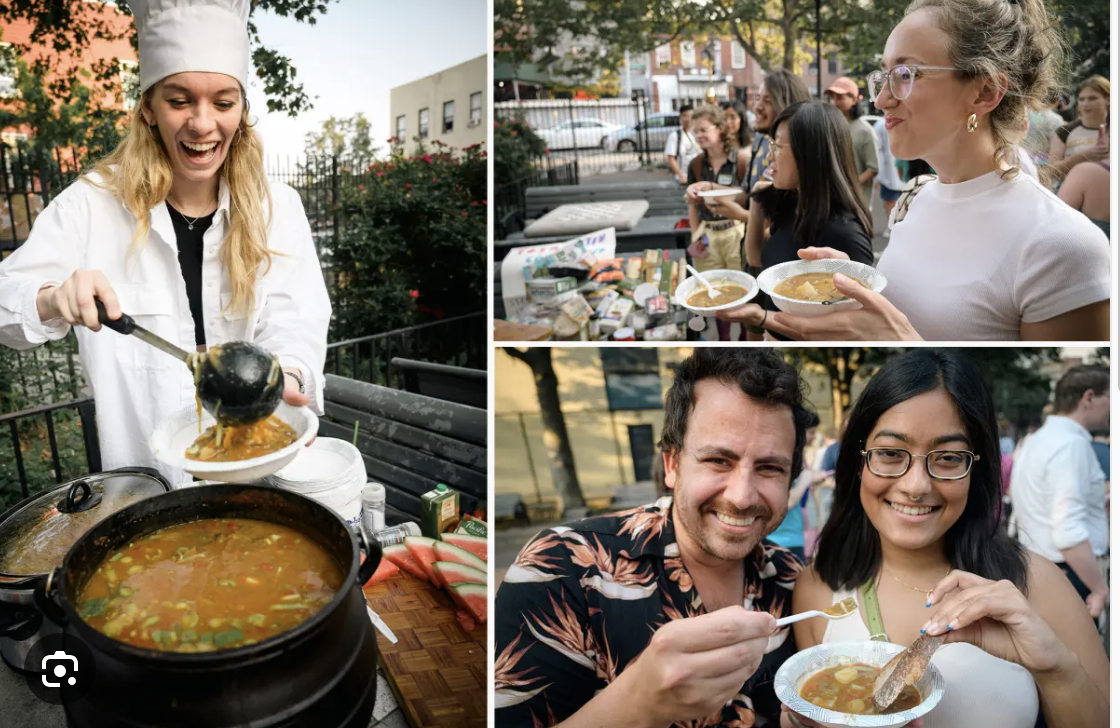It is collaborative, unco-ordinated—and tasty

Apr 4th 2024SaveShareGive
It began with a screenshot of a Wikipedia entry entitled “perpetual stew”. “I’ve always wanted to do it, I’m finally doing it…I’m gonna keep this cooking for at least a week,” Annie Rauwerda (pictured) announced to the camera, before enjoining: “Come over, bring an ingredient, add to the pot!”
As it turned out, the stew would bubble away for two months. Ms Rauwerda, a writer and social-media influencer, chronicled its development on TikTok, racking up millions of views in the process. (Crock-Pot, thrilled by the publicity, offered to send her more of their products.) She hosted casserole congregations at a park in Brooklyn and youngsters turned up with various vegetables, herbs and spices, as well as flyers.
The point of perpetual stew, otherwise known as “forever soup”, is very much in the name. The cooking never ceases, as ingredients are replenished as required. The chances of food poisoning are reduced by making sure the mixture is piping hot before serving; most harmful bacteria die once temperatures reach 74°C (165°F). Ms Rauwerda says that no one fell ill during her 60-day stint.
Social media have heralded a revival of interest in the stew as a meal both cheap and delicious. In 2020 a recipe by Alison Roman, a bestselling food writer, advised using chickpeas and coconut milk; it went viral and earned the definitive moniker #thestew. The dish is often thought of as a warming and starchy staple in winter, but search for “summer stew” and you will find scores of recipes.
Stew has a long-simmering lineage. In medieval Europe peasants would make a pottage (on the heartier side, with a thick consistency) or a pot-au-feu (a more liquid soup), incorporating whatever foods and flavourings they could afford and were seasonally available. It was consumed year-round. According to Lucy Worsley, a historian, 76% of a medieval labourer’s calories came from bread and pottage.
Some perpetual stews have earned renown. A French one reportedly steamed from the 15th century until the second world war. War also put a stop to an oden (fishcake broth) that had reportedly been enjoyed at Otafuku, a restaurant in Tokyo, since 1916; a successor, still going strong, was established in 1945.
At Wattana Panich, an eatery in Bangkok, a noodle soup with beef has been cooking for half a century in a gargantuan pan that stands five feet wide and two and a half feet deep. Nattapong Kaweeantawong, the owner, adds almost 70kg of beef each day which is persistently stirred into a concentrated concoction of herbs, spices and roots. It, too, has excited interest (as well as taste buds): a video by Winela World, a travel influencer, has almost half a million likes on TikTok.
Beyond novelty, there are two reasons to partake of a bowl. One is taste. Soup can be watery and thin, but continuous counterparts offer a deep flavour which develops over time. Reviews of Wattana Panich’s soup praise it as gravy-like, both “tantalising” and “an explosion of flavours”.
The other is communality. Pottage would be made in a cauldron over a hearth, usually in the main living area of a home: a symbol of food’s central role in bringing family and friends together. Paul Scarron, a French poet, wrote in the 17th century that pottage “delights our bodies,/and yet more our souls”.
In the atomised 21st century, the idea of sharing a meal with your neighbour is more remote than ever. But Ms Rauwerda found that her Gen Z peers delighted in the social and collaborative aspect of the perpetual stew. “There would be people that would come every single week, the diehards, and stay till the very end,” she says; two of them are now in a relationship. By the time the pot ran dry, Ms Rauwerda estimates she had fed around 100 people. They are no doubt hungry for more. As one person wrote on TikTok: “When’s the stew crew meeting up again?” ■
Excerpts: The Economist.




COMMENTS